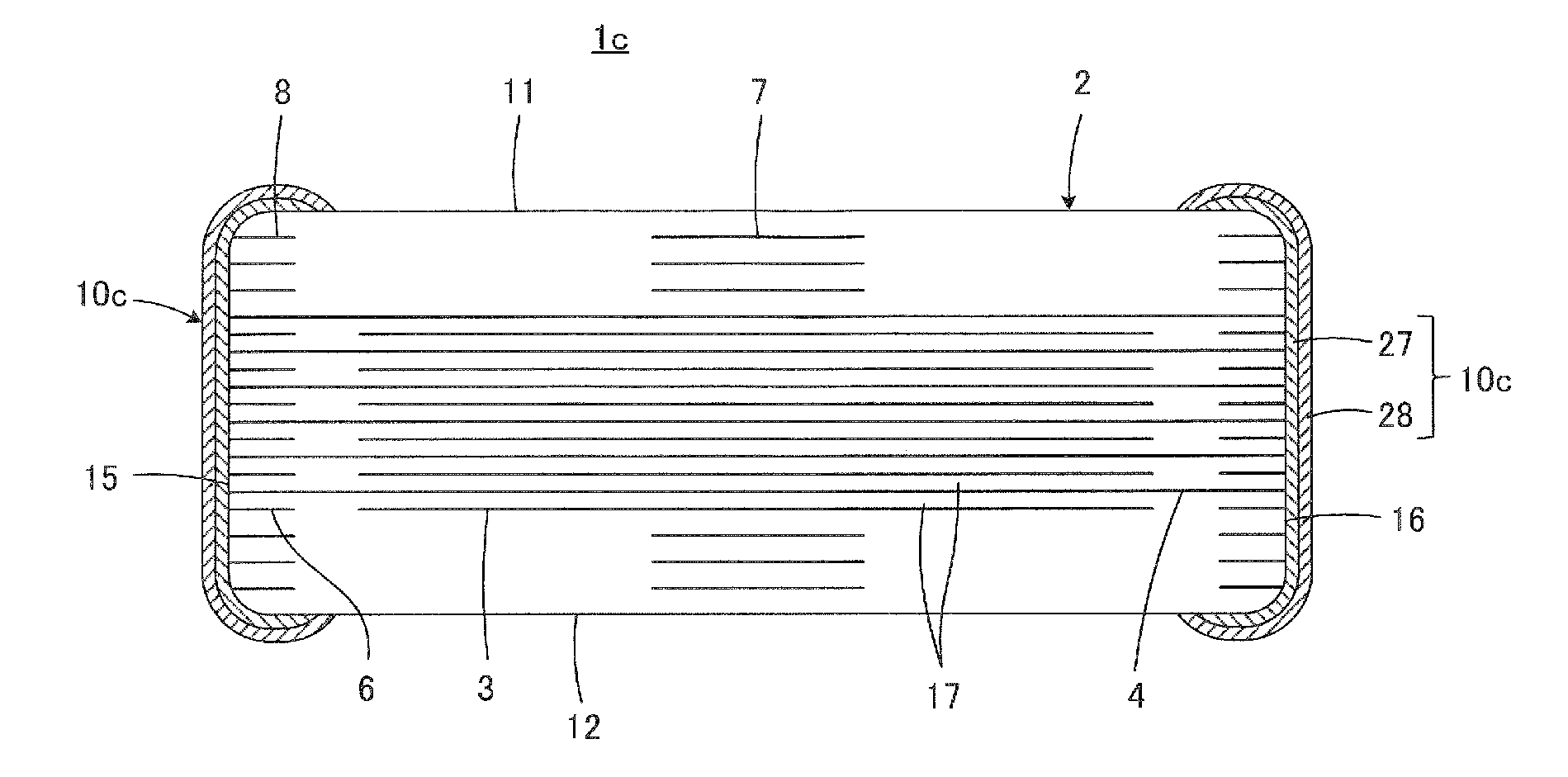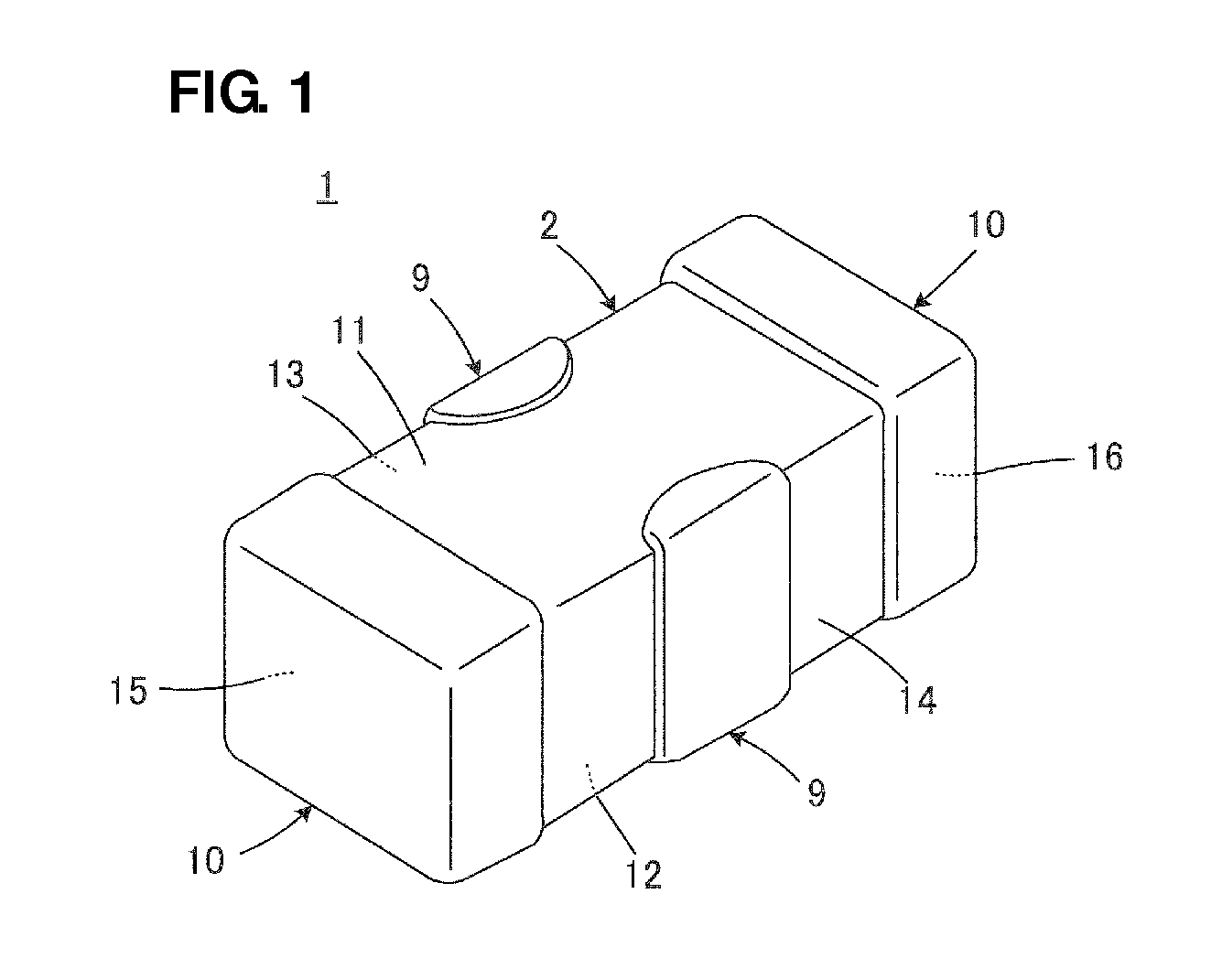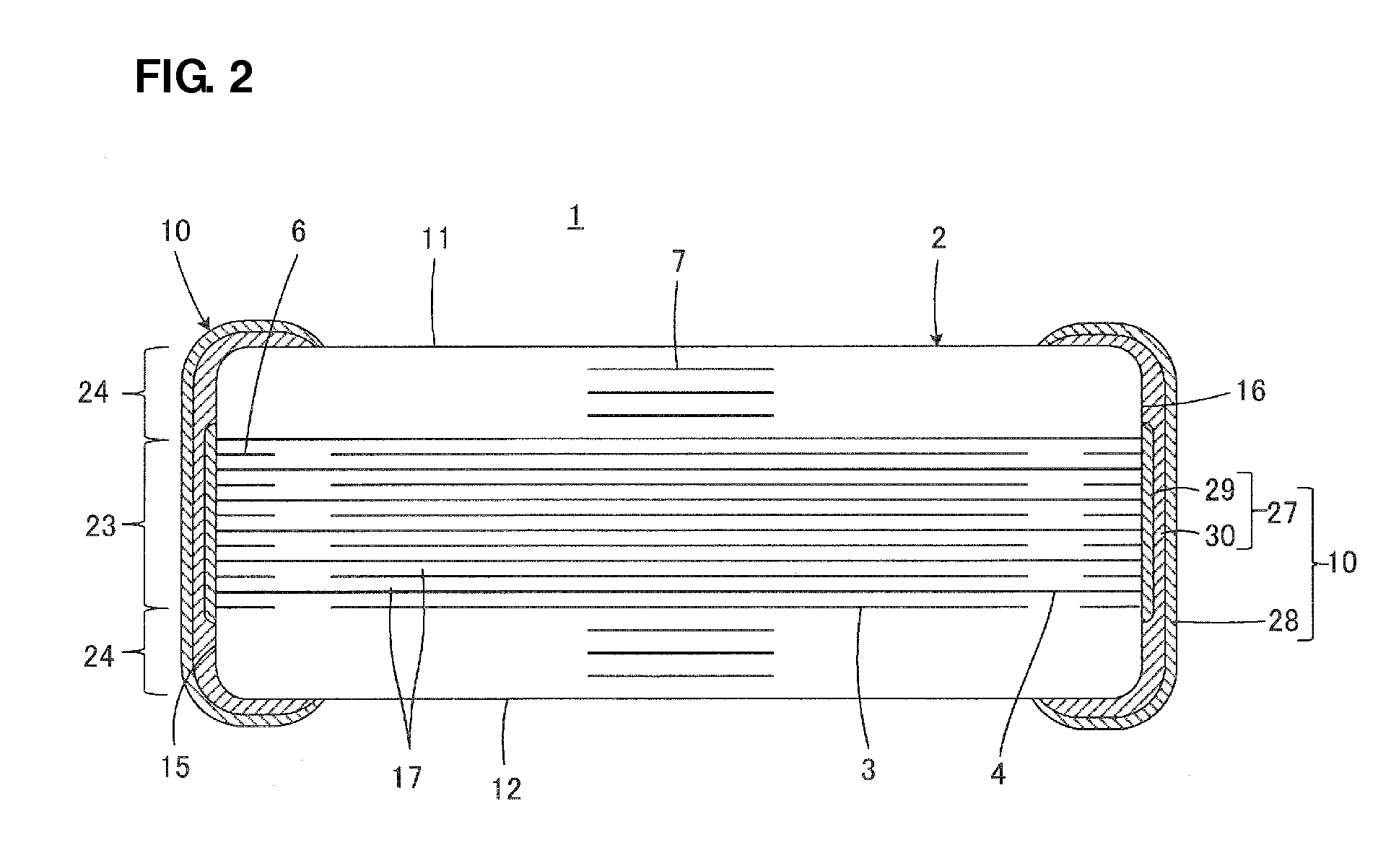Monolithic ceramic electronic component
a technology of monolithic ceramic and electronic components, applied in the direction of fixed capacitor details, generators/motors, fixed capacitors, etc., can solve the problems of difficult forming of outer electrodes with high accuracy, limited accuracy of applying thick film paste, and general degradation of monolithic ceramic electronic components, so as to reduce the local shortening distance between the inner electrodes, prevent degradation of reliability, and facilitate the effect of forming outer electrodes
- Summary
- Abstract
- Description
- Claims
- Application Information
AI Technical Summary
Benefits of technology
Problems solved by technology
Method used
Image
Examples
first preferred embodiment
[0038]A first preferred embodiment of the present invention will be described below with reference to FIGS. 1 to 7. A monolithic ceramic capacitor 1 according to the first preferred embodiment includes a ceramic base element 2. The monolithic ceramic capacitor 1 further includes first and second inner electrodes 3 and 4, first and second inner-layer dummy conductors 5 and 6, and outer-layer dummy conductors 7, which are all disposed inside the ceramic base element 2, as well as first and second outer electrodes 9 and 10, which are disposed on outer surfaces of the ceramic base element 2. Details of the structure of the monolithic ceramic capacitor 1 will be described below followed by a description of a manufacturing method.
[0039]The ceramic base element 2 preferably is substantially parallelepiped, and includes outer surfaces defined by a pair of first and second principal surfaces 11 and 12 opposed to each other, a pair of lateral surfaces 13 and 14 opposed to each other, and a pa...
second preferred embodiment
[0100]A second preferred embodiment of the present invention is illustrated in FIG. 8. FIG. 8 is a sectional view corresponding to FIG. 3. Equivalent elements in FIG. 8 to those in FIG. 3 are denoted by the same reference symbols and duplicate descriptions of those elements are omitted here.
[0101]In a monolithic ceramic capacitor 1a according to the second preferred embodiment, an outer-layer dummy conductor 7a is arranged such that the outer-layer dummy conductor 7a does not penetrate through the ceramic base element 2 in the widthwise direction and it is separated in the widthwise direction.
third preferred embodiment
[0102]A third preferred embodiment of the present invention is illustrated in FIGS. 9 and 10. FIG. 9 is a perspective view corresponding to FIG. 1, and FIG. 10 is a sectional view corresponding to FIG. 3. Equivalent elements in FIGS. 9 and 10 to those in FIGS. 1 and 3 are denoted by the same reference symbols and duplicate descriptions of those elements are omitted here.
[0103]A monolithic ceramic capacitor 1b according to the third preferred embodiment is characterized in that a first outer electrode 9b, including an underlying layer 25 and an overlying layer 26 thereof, is disposed to extend over the first and second lateral surfaces 13 and 14 and the first and second principal surfaces 11 and 12 of the ceramic base element 2 in a fully surrounding state.
[0104]In this preferred embodiment, the outer-layer dummy conductors 7 are preferably exposed in at least respective portions of the principal surfaces 11 and 12 by chipping off the ceramic layers 17, which define the principal sur...
PUM
| Property | Measurement | Unit |
|---|---|---|
| thickness | aaaaa | aaaaa |
| thickness | aaaaa | aaaaa |
| thickness | aaaaa | aaaaa |
Abstract
Description
Claims
Application Information
 Login to View More
Login to View More - R&D
- Intellectual Property
- Life Sciences
- Materials
- Tech Scout
- Unparalleled Data Quality
- Higher Quality Content
- 60% Fewer Hallucinations
Browse by: Latest US Patents, China's latest patents, Technical Efficacy Thesaurus, Application Domain, Technology Topic, Popular Technical Reports.
© 2025 PatSnap. All rights reserved.Legal|Privacy policy|Modern Slavery Act Transparency Statement|Sitemap|About US| Contact US: help@patsnap.com



